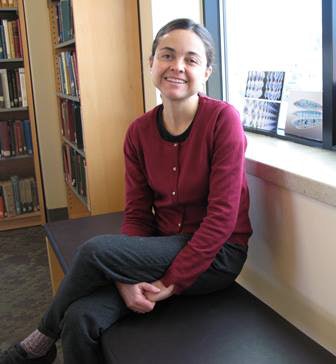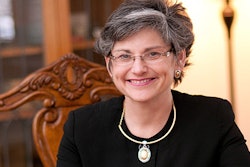 Anna Maria Rey is one of the recipients of the 2013 MacArthur Fellowship, or “genius grant,” for her work with ultra-cold atoms.
Anna Maria Rey is one of the recipients of the 2013 MacArthur Fellowship, or “genius grant,” for her work with ultra-cold atoms.As a young student in Bogota, Colombia, Ana Maria Rey was discouraged by her parents from pursuing her love of physics.
Her mother, an economist and university dean, and her father, a lawyer who helped manage the national lottery, thought it wasn’t practical. They thought Rey should study engineering.
But Rey stuck with physics, intrigued that reality could be described by equations.
A couple of decades later, Rey, 36, is now one of the recipients of the 2013 MacArthur Fellowship, or “genius grant,” for her work with ultra-cold atoms. The theoretical physicist joins a rarefied group of scientists, musicians, choreographers, writers, historians and others honored by the MacArthur Foundation since 1981 for “exceptional creativity” in their work. The foundation lauded Rey for “advancing our ability to simulate, manipulate, and control novel states of matter” through her research into ultra-cold atoms.
A fellow at JILA, a joint institute of the University of Colorado at Boulder and the National Institute of Standards and Technology, Rey will receive a $625,000 stipend, paid out over five years, which she can spend any way she likes.
Dr. Jun Ye, a fellow at JILA who works with Rey, says she has “clearly distinguished herself among her peers” and is a great role model for women who want to go into science.
“She’s very quick, very diligent [and] full of energy,” Ye says.
A petite, approachable woman, Rey says she’ll use some of the MacArthur money to enroll her son, Nicolas, 4, in a pre-kindergarten program, allowing her to work until later in the day. She will also hire people and use the money in other ways that are “indirect but useful” to her work, she says.
Although more women are earning degrees in physics, the field remains dominated by men. Monica Plisch, associate director of education and diversity at the American Physical Society, says the profession is trying to get more women into the field and do a better job of telling the public what types of jobs physicists do. Physics is seen as somewhat of a mystery, and that can deter men and women from making it a career, says Plisch.
Rey doesn’t sound bitter while recounting her parents’ doubts about her pursuing physics. They thought their daughter would wind up a high-school teacher in Colombia. Also, Colombia had no doctoral program in physics, so it become evident that Rey had to leave the country, which she was willing to do.
Rey took physics in high school and received a bachelor’s degree in the subject from the Universidad de los Andes in Bogota. During her university years in the mid-’90s, Colombia was in the grip of violence from illegal drug trade and paramilitary and guerrilla groups. Rey recalls a bomb going off while she was studying one day.
After graduation, Rey married Dr. Juan Gabriel Restrepo — a fellow physics student at the university who today is an assistant professor in applied mathematics at the University of Colorado Boulder — and the couple moved to Maryland.
After a brief stint exploring plasma physics at the University of Maryland, College Park, Rey wound up doing research at the National Institute of Standards and Technology in Gaithersburg, Md. Both she and Restrepo received a Ph.D. from UMD; she, in physics, and he, in applied mathematics.
The couple then moved to the Boston area, where Rey did a postdoctoral fellowship at the Institute for Theoretical Atomic Molecular and Optical Physics at the Harvard-Smithsonian Center for Astrophysics. During that time, Rey received Colombia’s highest award for achievement in science, the Fundacion Alejandro Angel Escobar Exact, Physical and Natural Sciences Prize.
In 2008, the couple moved to Boulder after Rey was recruited by JILA and Restrepo was offered a position at UC Boulder.
In her work, Rey chills strontium and ytterbium atoms to a billionth of a Kelvin, close to absolute zero. In this state, the atoms barely move, display unusual behavior and can be moved around by laser lights.
Rey traps the atoms in an “optical lattice” of laser lights that allows her to study the atoms and explore their properties.
The ultra-cold atoms can be used to make extremely precise measurements for such devices as atomic clocks — Rey is developing a prototype expected to be many times more precise than existing ones — and GPS devices.
Rey sees her research as being useful for detecting oil sources, activities in space and other areas where precise synchronization is crucial.
She also hopes her research will lead to the creation of materials such as superfluids, which seemingly move independently of gravity or surface tension, and quantum magnets, atoms that act like tiny bar magnets.



















